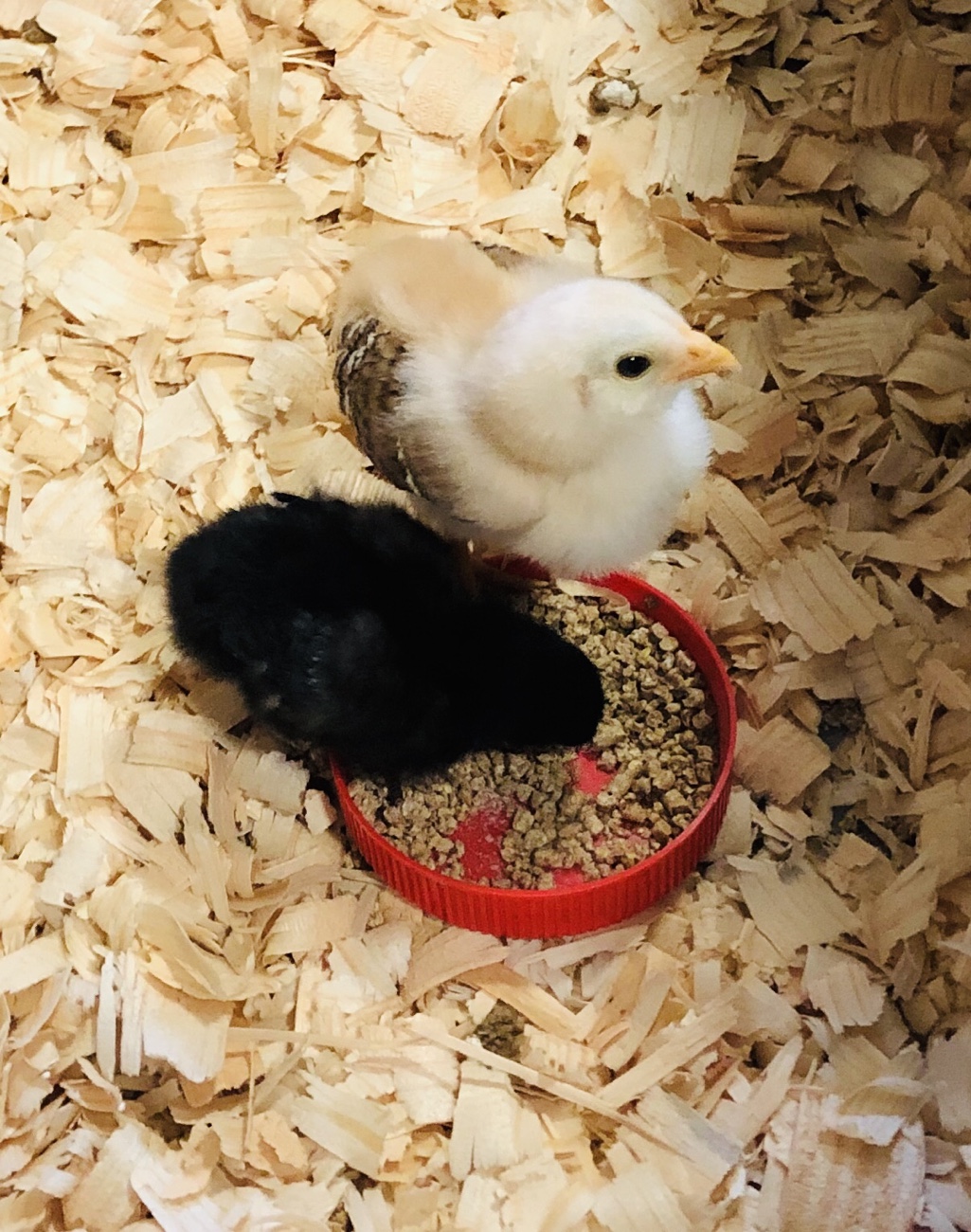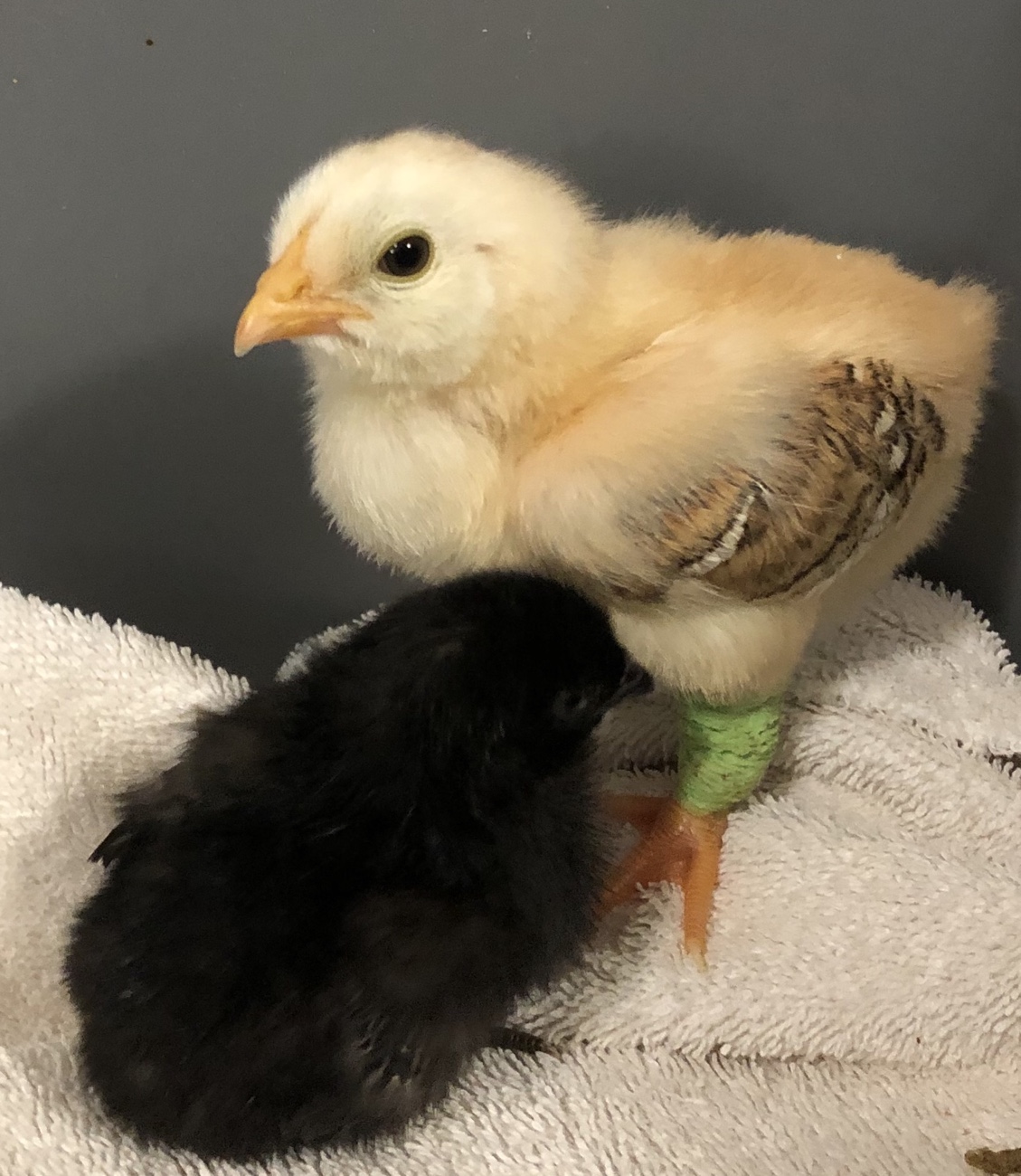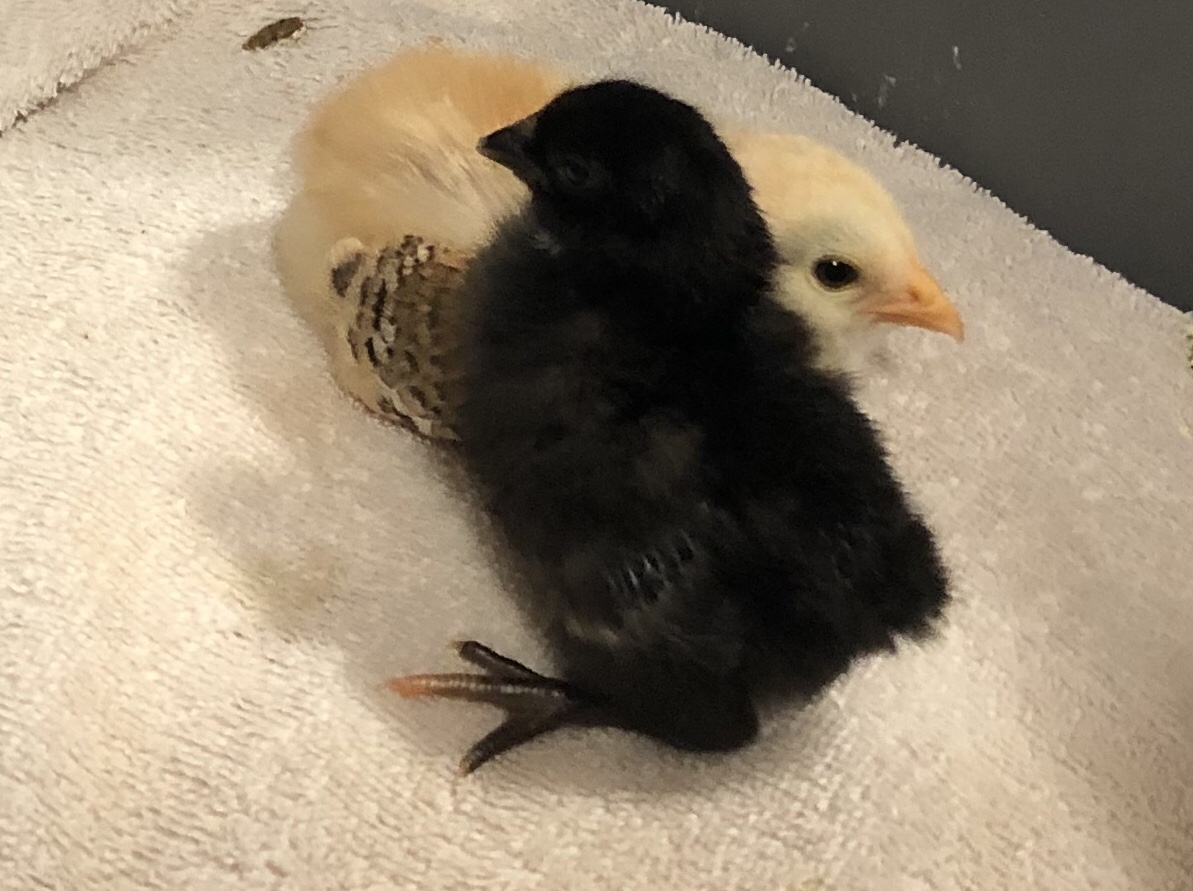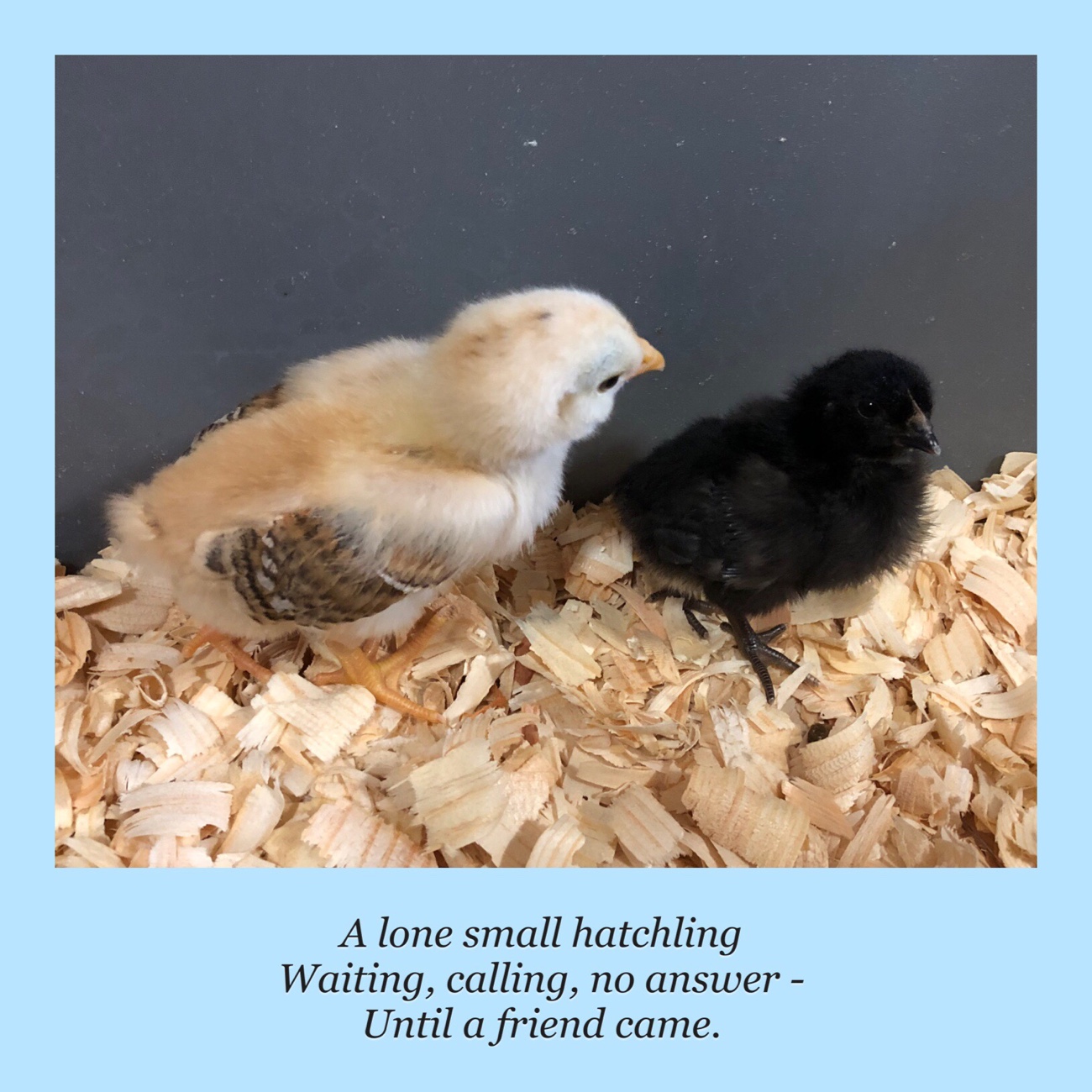
There once was a very small yellow chick that hatched with a leg that turned slightly out to the side. It didn’t know it was smaller or slower than the other chicks, or that it couldn’t run like everyone else. The chick just tried its best to live like all the other chicks, doing the same things, even if it couldn’t quite keep up. This is the story of that little chick…and an unexpected friendship.
This little chick was from one of the last green eggs to hatch. In my experience, late hatchers often tend to have issues like leg problems or partially-absorbed yolks. Chicks can survive these obstacles – not always, but sometimes – and lead relatively normal lives.
This chick was noticeably smaller than the others, and I wasn’t sure (at first) that it was eating, drinking, or pooping – all critically important to the health of growing chicks. A check of the vent showed no pasting. Good. But I noticed that one of its legs turns out to the side. I explored the hock area to rule out a slipped tendon or injury – I found no clear signs. Thinking it could be the start of splay leg, I placed a colorful elastic wrap hobble. Splay leg can be treated, with good results, if done early. I also began dropper feeding a liquid vitamin supplement (in case the problem was deficiency-related) and progressed to dropper feeding liquid food, too.
As the days passed, the chick didn’t seem to be using the problem leg much, just touching it down occasionally, doing more of a hop than a walk and flapping its tiny wings to help balance itself. The other chicks were growing fast, but this little one stayed small. It became more cranky with the feedings (actually, a good sign) and finally seemed ready to stop the dropper appointments. I was immensely relieved to see the small one pushing its way into the feeder and drinking water on its own.
I continued to research the leg issue, turning to one of my favorite resources: BackYard Chickens (and if you need to learn the basics about raising fowl, the BYC Learning Center is a helpful place to start). The fact that the chick didn’t seem to be responding as expected to the splay leg treatment – usually, results are noticeable in just days and the hobble can often come off in less than a week – nagged at me. I continued to research the issue and decided to approach it as a possible slipped tendon, even though I couldn’t feel the tendon out of place in the hock area. I wrapped the hock (and tendon) snugly in elastic bandaging, which pulled the leg straighter, and also wrapped above the hock for additional stability. I figured any increased stability in the leg would offer greater mobility and less need to hop and use wings to balance.

It took several days before it looked like the chick was using the leg in a more normal fashion. In addition, it began to peck at the hobble, so I removed it; clearly, splay leg was not the core problem because the leg stayed in position after the hobble’s removal. I left the “brace” on the hock area for several more days, observing improved mobility. Finally, after watching the chick use the braced leg very normally for a few days, I removed it…and you can’t tell that there was ever anything wrong with the leg. Success!
Even though its leg functions normally now, the chick is still significantly smaller than its hatch mates. As they grow, chicks get pretty rambunctious, and the little one was trampled by over exuberant fellow hatchlings more than once (though it just shook it off and continued on with its chick business), and the hobble and brace situation made it even more difficult for it to keep up. Fortuitously (and also sadly), a single chick hatched from a group of shipped hatching eggs and was all by its lonesome in its brooder. A single hatchling is a lonely one, and the little one chirped loudly, nonstop, looking for others. I put some fuzzy wool socks under the Mama Heating Pad (MHP) for it to snuggle with, but it always worked its way out into the open area of the brooder and began calling for others. Even though the two chicks were hatched a week and a half apart, I saw an opportunity and attempted to integrate them.
At first, it didn’t go well: the older chick chirped unhappily, looking for its hatch mates. The younger one wasn’t sure what to make of the older one and hid under its MHP. When the older one noticed the younger one’s feet under the MHP, it pecked rather enthusiastically at them, which made me nervous (scenes of chick-on-chick violence flashing through my mind), so I put the older one back in with its hatch mates. In retrospect, I was unduly anxious and, honestly, jumped the gun on ending the integration. After listening to the little orphan chick crying incessantly the following day, I decided to try again, and after just a little “getting to know you” (and totally normal) toe and eye area-pecking, the two became fast friends.

It’s been a few days since the two chicks became roomies, and they’re inseparable. The older one shows the younger one where the food is, chirping excitedly like “hey, come check this out!” when it finds the chick starter crumbles. The younger one snuggles up to the older one and follows the older one around like a big sister (or brother). It is so heartwarming to watch them together, living examples of the importance of companionship to animals. One day, when they’re older and bigger, they’ll join the main flock. Until then, they’ll have a brooder all to themselves, and adventures (like grass underfoot and bugs to chase) ahead.


Comments are closed.